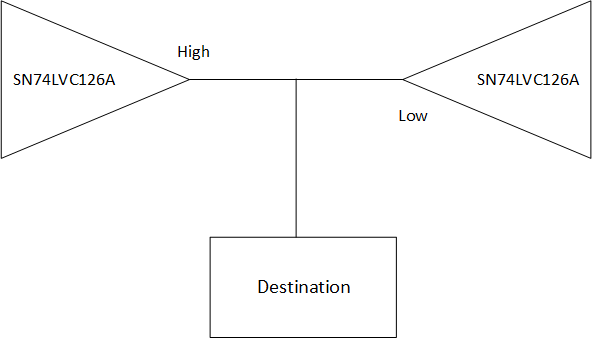Other Parts Discussed in Thread: SN74LVC541A
In my application there is a case that the outputs of two SN74LVC126As are tied together directly, to drive a common destination. No serial damping resistors are allowed in between as the application is sensitive to serial R values.
During normal operation, only one buffer is actively driving the output while the other is tri-stated.
My question is for failure mode analysis - if somehow one SN74LVC126A is driving high while the other is driving low on the same wire, what's the potential damage to the chip?
Normally I saw other posts asking failure mode of shorting the output to GND. I wonder if there's difference than that in my case where the current is flowing through the peer driver instead of to the GND. Would there current clamping feature on the peer help us prevent the damage to the chip?
Thanks for the support.


